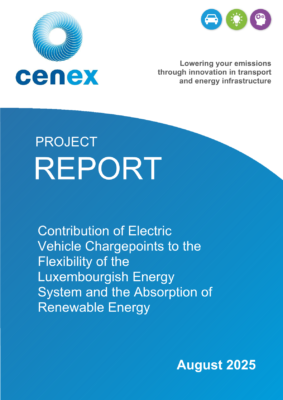

EV Contributions to Luxembourg Grid Report
Resource
Summary
The “Contribution of Electric Vehicle Chargepoints to the Flexibility of the Luxembourgish Energy System and the Absorption of Renewable Energy” report delivered by Cenex in for Institut Luxembourgeois de Régulation (ILR) explores how EV charging can facilitate Luxembourg’s transition to a renewable and flexible energy system.
The study assesses the potential of smart and bi-directional (V2G) charging to balance grid demand, absorb excess renewable generation, and lower system costs. Through modelling, stakeholder engagement, and scenario analysis, the report offers insights into how coordinated EV charging can enhance energy resilience and accelerate decarbonisation in Luxembourg’s transport and power sectors.
Key Points
- Smart charging and V2G can significantly enhance flexibility of the grid, aiding in the integration of more renewable energy into Luxembourg’s electricity system.
- EVs can serve as distributed energy resources by storing excess renewable electricity and returning it to the grid during peak demand periods.
- Managed charging strategies can lower the costs of grid reinforcement and reduce stress on the electricity network.
- Collaboration among stakeholders and the establishment of digital infrastructure are crucial for realising the full potential of V2G
- Clear policies and market incentives are essential to encourage participation in flexibility services from both consumers and charge point operators.
